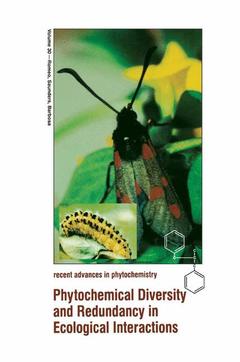Phytochemistry and Diversity: Adaptation or Random Variation? M.R. Berenbaum, A.R. Zanger. Diversity, Redundancy and Multiplicity in Chemical Defense Systems of Aspen; R.L. Lindroth, S.Y. Hwang. Diversity and Dynamics of Crucifer Defenses against Adults and Larvae of Cabbage Butterflies; J.A.A. Renwick. Defensive Chemicals in Grass-Fungal Endophyte Associations; M.R. Siegel, L.P. Bush. Multiple Defenses and Signals in Plant Defense against Pathogens and Herbivores; R. Hammerschmidt, J.C. Schultz. Phytochemistry of the Meliceae: So Many Terpenoids, So Few Insecticides; M.B. Isman, et al. The Role of Mixtures and Variation in the Production of Terpenoids in Conifer-Insect-Pathogen Interactions; R.G. Cates. Relationships between the Defense Systems of Plants and Insects: The Cyanogenic System of the Moth Zygaena trifolii; A. Nahrstedt. Polyphenol Oxidase as a Component of the Inducible Defense Response in Tomato against Herbivores; C.P. Constabel, et al. The Role of Benzoic Acid Derivatives in Systemic Acquired Resistance; S. Uknes, et al. Natural Products, Complexity, and Evolution; B.B. Jarvis, J.D. Miller. An Explanation of Secondary Product Redundancy; R.D. Firn, C.G. Jones. Index.




